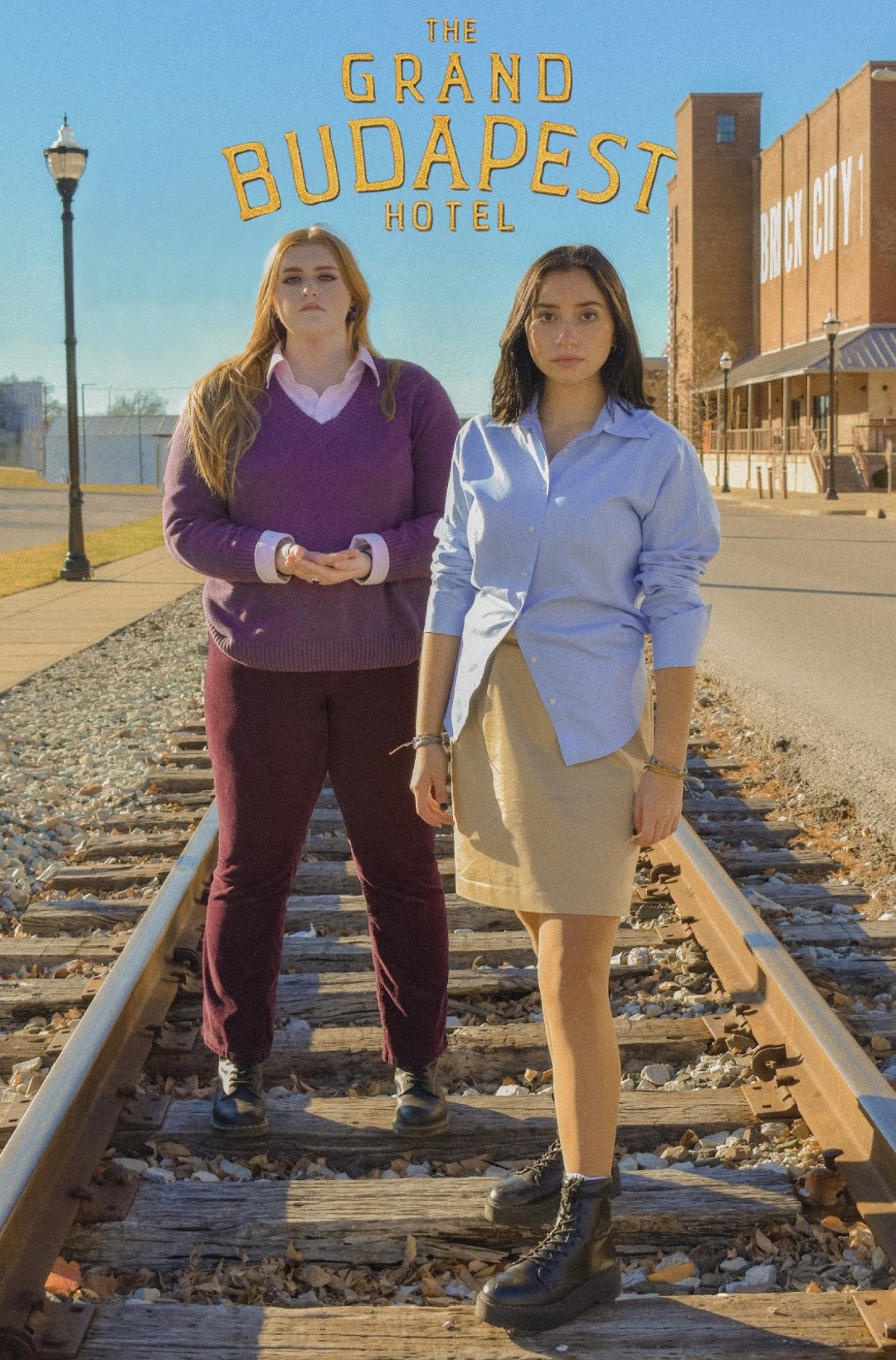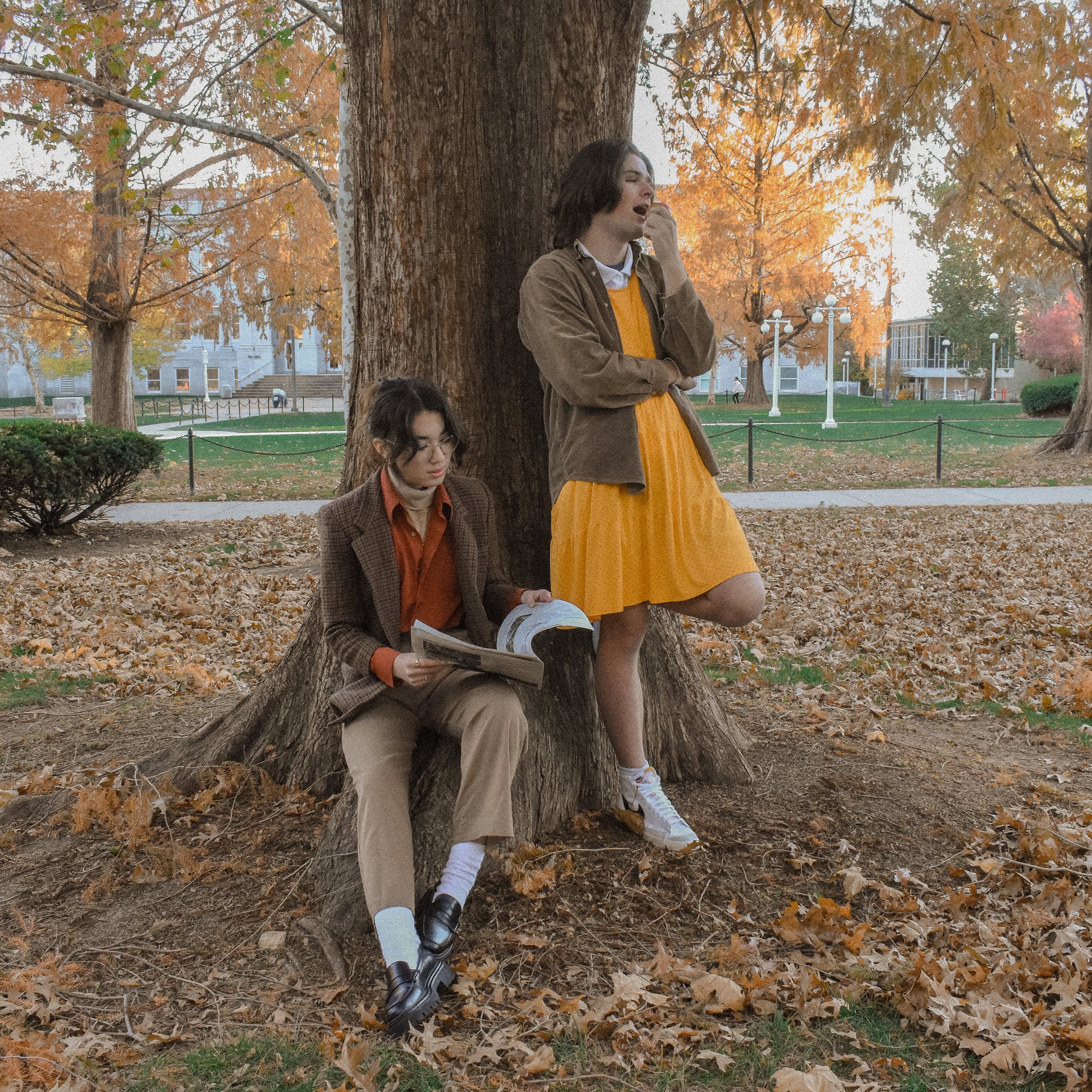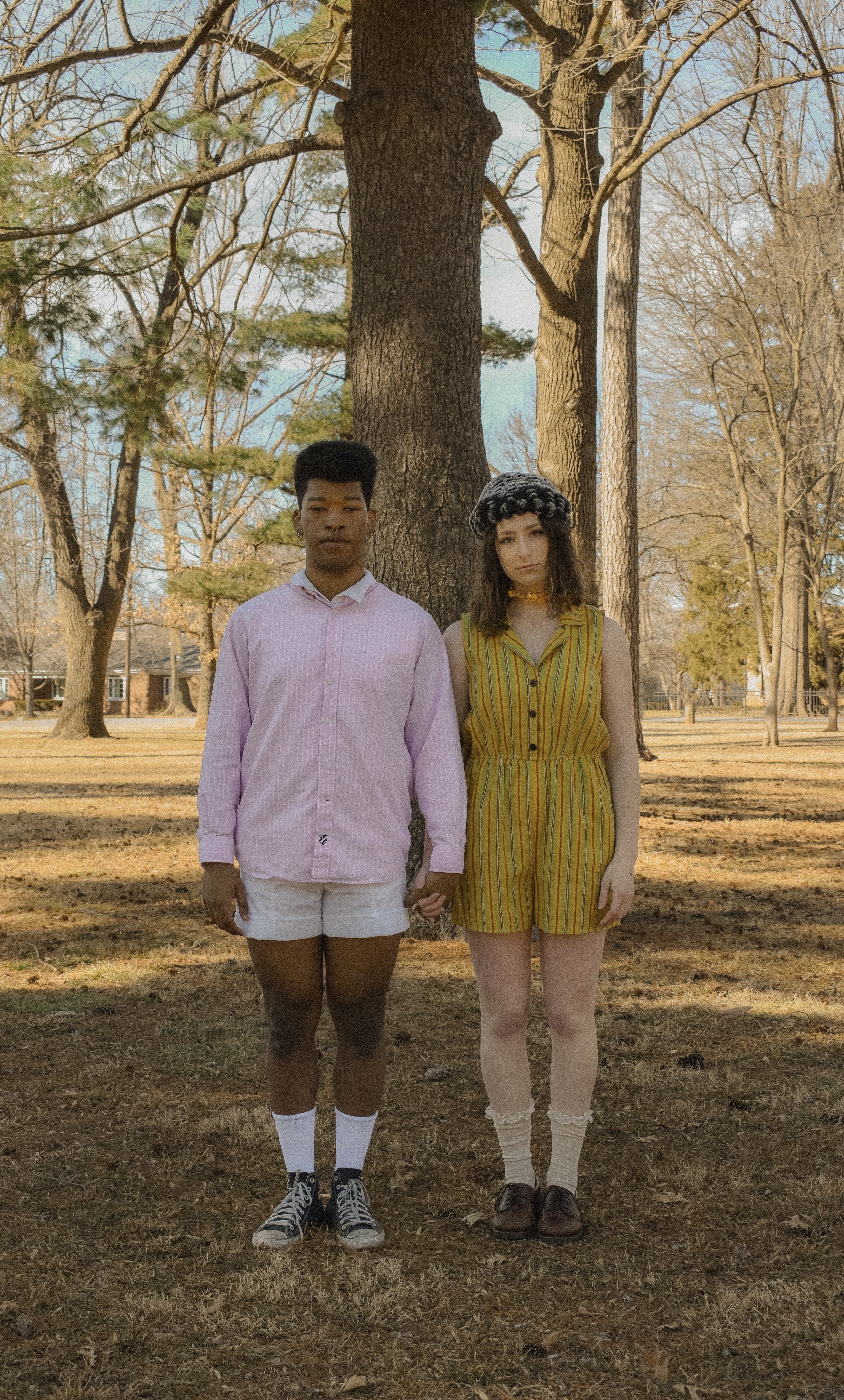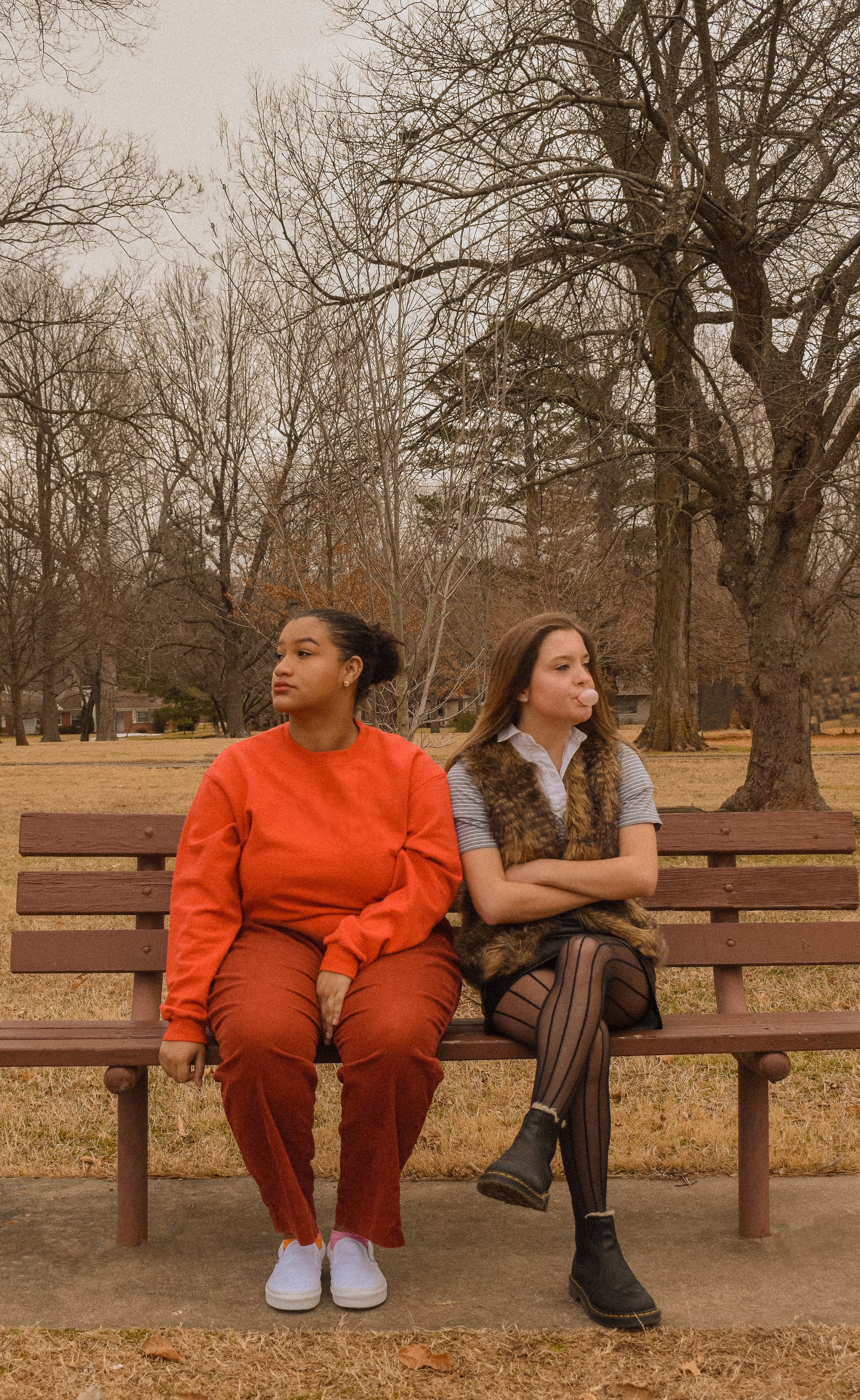The Influence of Wes Anderson
Written by Camryn Mahnken and Rishita Nannapaneni
Photos and Direction by Rishita Nannapaneni
Graphics by Sarah Nash
Co-Directed by Mikayla Buneta
Models: Mikayla Buneta, Hunter Beckmann, Natalia Cordero, Preslee Crowl, Camryn Mahnken, Sarah Nash, Liam Smith, Lily Elcan, Scout Broshears, and Madison Clayburn
Anyone familiar with pop culture and film knows the name Wes Anderson. His reputation for aesthetically-pleasing, perfectly-hued, symmetrical cinematography goes far beyond that of most directors. But what exactly makes up his directing style, and how do his movies look so pleasing to the eye?
We’ve put a spin on our favorite film covers to showcase what makes a Wes Anderson a Wes Anderson.
Symmetry
Although Anderson is not the first director to use symmetry in film, he has become widely known for consistently using this type of shot in his repertoire. Let’s be honest – symmetry on screen just scratches that itch in your brain. In most of the movie covers for an Anderson film, the subjects are centered in the middle of the frame. We attempted to recreate this in our photoshoots through the positioning of the models as well as with the backgrounds, such as in the Moonrise Kingdom photos.
Palette
The varied range of color in Wes Anderson’s films leave you with your eyes glued to the screen so you don’t miss a second of the stunning visuals. From the rich purples and pinks of The Grand Budapest Hotel, to the pastel blues and oranges of Moonrise Kingdom, Anderson’s films use color as a defining element. In the photoshoots, we tried to show how those colors can be brought out regardless of location; it really is about how the scene is directed and styled. With clothing choice and editing, we wanted to spotlight the unique color palettes of each film. For example, during “The Fantastic Mr. Fox” photoshoot, we highlighted the burnt orange, yellows, and browns that are typical of the film.
Setting
Have you ever watched an Anderson film and found it difficult to place, whether in the time period or location it was set? We definitely have. Take a look at “The Royal Tenenbaums,” for example. Though set in the 1970’s, Margot Tennenbaum drives a gorgeous Austin Healey 3000 that was popularly made in the 50’s. Aspects of Anderson’s films, even when they’re already set in a nostalgic time, incorporate elements from different decades in their props, costumes, and script. Anderson also utilizes location to adhere to his aesthetic. For our photoshoots, we used a mix of locations, whether old buildings or areas in nature, to reflect Anderson’s distinct choice of setting, a decision that often characterizes his films.
Wes Anderson has made a name for himself through the production of eye-catching films, incorporating different elements to achieve a style of visual storytelling that is sure to be appreciated for years to come.










